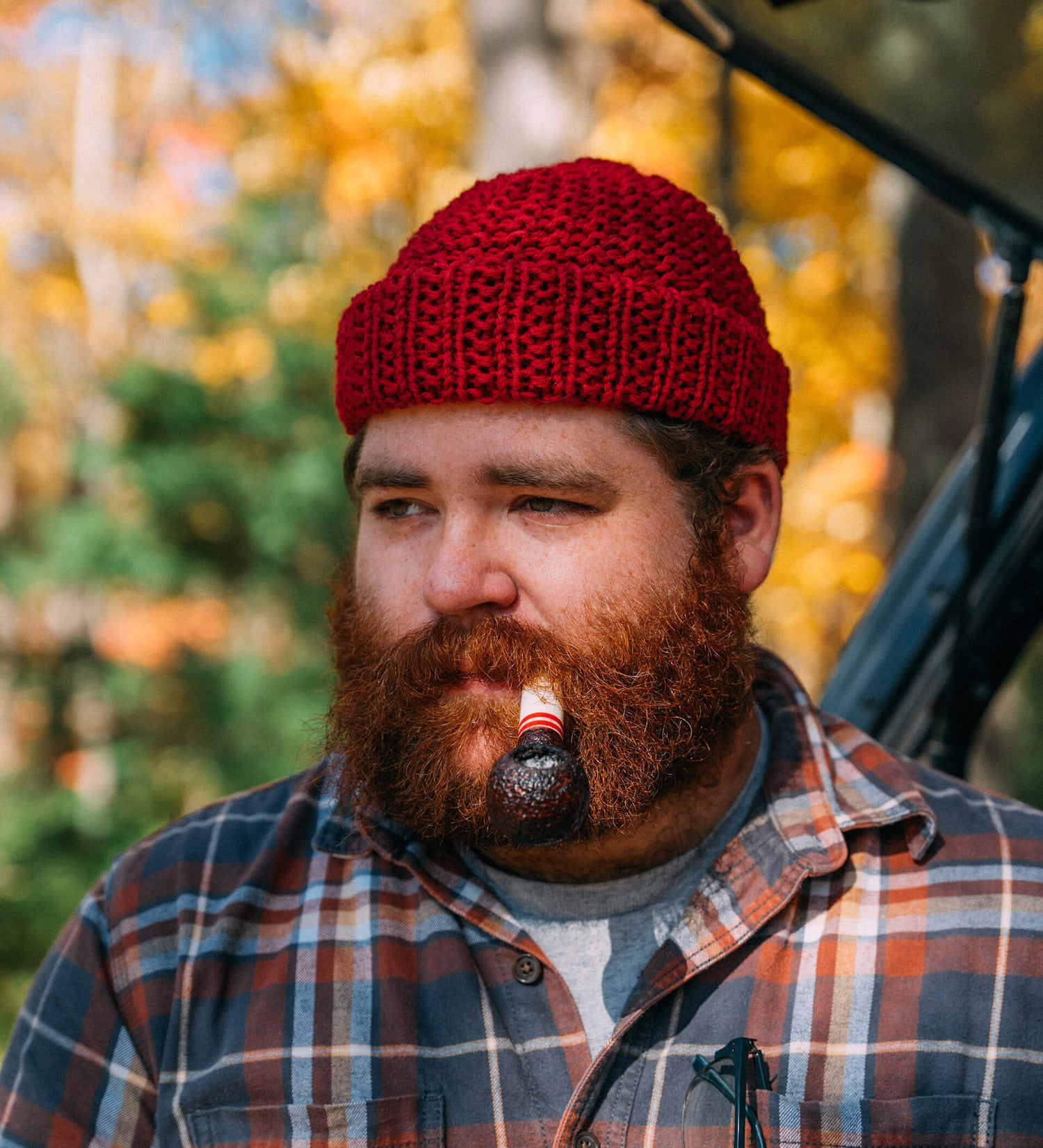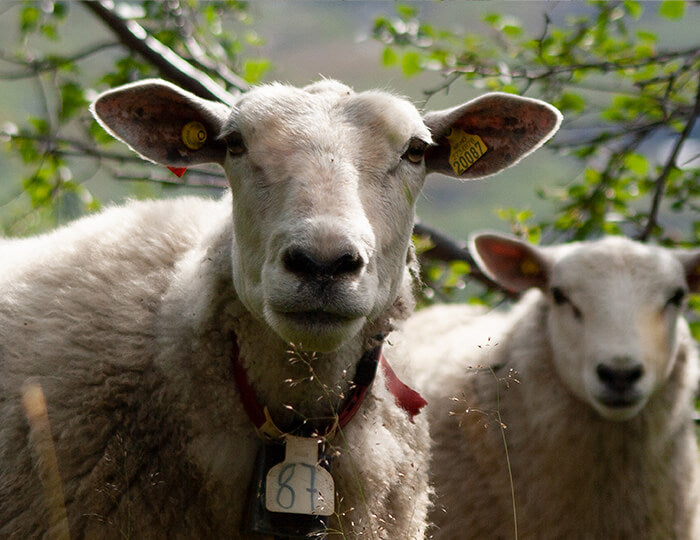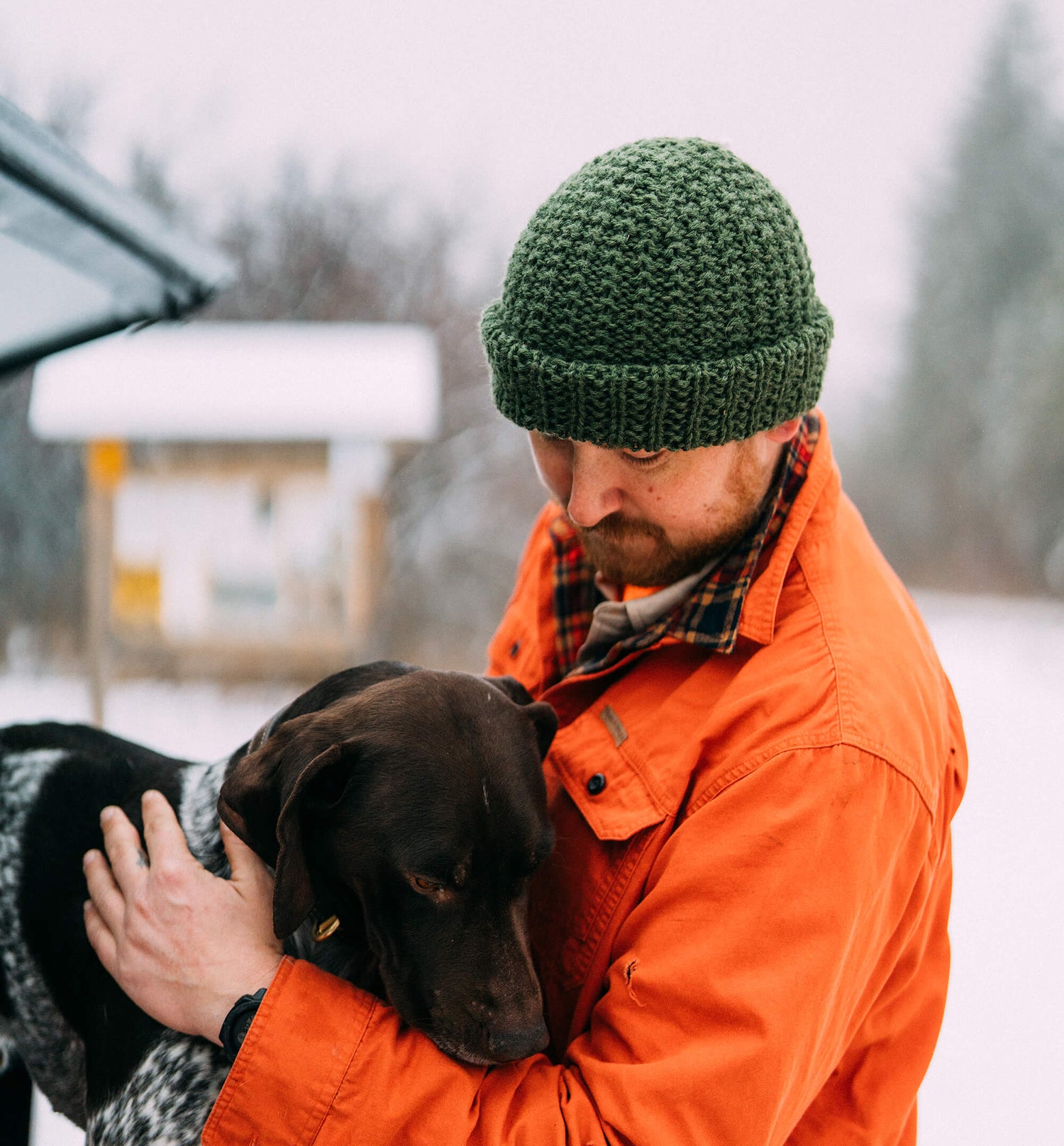Wool was always the clear choice for us. This decision has its roots in Norwegian culture, as well as the till-this-day superiority of wool as a protector against the elements. I mean, the stuff is both flame and water resistant!
In Norway, if you have a thick, home made sweater, chances are it’s made of sheep wool. While modern day globalisation has exposed us Northerners to other wools like alpaca, and science has brought synthetic fibres, we still swear to the naturals — and because of our culture, the good old regular sheep reigns supreme in our minds.
Norwegian hills are scattered with sheep. The mountains are teeming with them. Old mountain roads are clogged because of flocks of sheep on summer pasture. It is with a deep sense of connection to nature, and my former travels that I pull a sheep wool beanie over my head, or step into a sweater made by my mom.

Wool stays warm when wet
That’s how the saying went when I grew up.
We can’t guarantee that you will stay warm. Don’t go to Antarctica naked in a pair of wool socks and claim that we said you’d stay warm. But, there is a special feature of the wool fibres themselves that keep the heat even when wet. This happens on a micro level in each hair, so even wearing heavily processed wool, like Norwegians commonly use in their thin wool long-johns, the features are in function.
This is fantastic for, say, a day skiing with your family, when you get exceptionally sweaty, the wind on the mountaintops is howling, and you need to stay insulated. The wool transports the sweat away from your body, and keeps the shivers away. This is why Norwegians swear to wool-underwear during winter sports, or late fall hikes in windy mountains.

Wool is antibacterial
Lanolin — which is the natural oil found in sheep wool — protects the sheep from infection. Maybe wool won’t protect you from infection, but it will protect from bad smell. You do not have to wash wool that often, because its natural anti-bacterial function, keeps the smelly bacteria away for a very long time. Wool socks, sweaters, beanies should be washed very seldom, and this keeps it whole and prime for a longer time.

Wool is Flame Resistant
When we were about to do our yearly bonfire around our house, we were always told to wear wool. Many synthetic fibres ignite easily, and when they burn they drip plastic that can melt into your skin. Wool is naturally flame resistant, so working that bonfire after cleaning up dad’s garage, is much less dangerous.
Flame resistant does not mean that it can’t burn, so don’t stick your head in the fire please.

Wool Shearing Promotes Sheep Well Being
One of the most enticing things about wool for me, is that it is natural. The closer to nature, the purer it feels to me. But aside from that poetic stand point, it is also a natural resource that doesn’t hurt its producer.
Shear a sheep, and new wool grows out. It just shares what it has with us, and then it goes on to produce more. Actually, if sheep in their current state of being aren’t sheared, they will drown in their own wool. You might remember Shrek the Sheep who escaped shearing back in 2004, and became a meme when he was found looking like I-don’t-know-what because of the untamed wool growth.
We also work with a wool provider that ensures the sheep has not undergone mulesing.

Wool is Natural
Back to the poetic part of wool just being cool because it is taken straight from nature and not altered very much. Not only is it cool. It is also helpful for our planet.
We all know what consequences non-degradable plastic waste has had on our nature. Going natural has always been something we are drawn to at Red Hat Factory. Many of the syntethic alternatives out there are based on plastic, and while that has it’s uses, we should all go natural whenever we can.
Tied with this value, is our approach to repair rather than discard.
The less strain we put on nature, the more space she gets to shine. Serving us green, lush grass and forests, and letting water spill over rocky mountain streams, where by chance sheep are drinking.

Wool Doesn’t Have to Itch
Growing up in wool was nice and warn, but it came with a caveat. It itched.
To solve this problem, we have done a compromise. I wish we could use Norwegian wool, but it’s just not worth it. The harsh Norwegian weather makes for a rougher wool coat, and leaves that wool above what we call “the itchiness threshold.”
We work with wool from Uruguay, where the warmer climate creates a softer coat on the sheep. But hey, it is still sheep.
If you want to get technical, wool fineness is measured in micron. Most Norwegian wool is at 32–34 micron, while the wool we use from South America is about 26,5. The infamous itchiness threshold is at 27 micron.
If you want a rough, primal looking wool product, but without the itch, 26,5 is just the value you want.